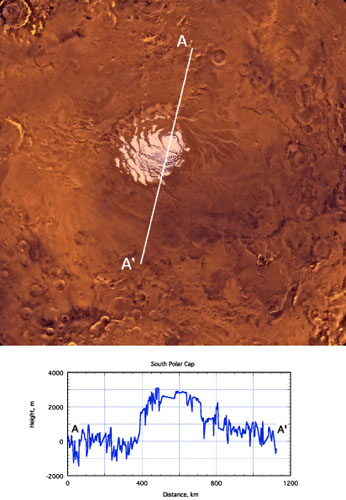
Pronounced seasonal changes in the appearance of south polar ice cap on Mars, as well as clear remote sensing data, tell us that the surface of the ice cap is covered with a CO2 (dry ice) frost. But is the underlying ice-the part we can't see or sense remotely-also made of CO2?
The short answer is no. Laser altimetry now tells us that the ice cap is about 400 km in diameter and 3000 thick at the center. The cratering record on its surface constrains its age to be somewhere between 1 - 100 My. Simple experiments on solid CO2 samples in the ice creep rig, reveal that the material is exceeding weak, the weakest of all the planetary ices that we have ever measured [PDF]. Applying a flow model suitable for the spreading of terrestrial ice caps, we found that a lump of CO2 with the volume of the Mars polar cap could not have maintained its current shape for more than a few thousand years even under Mars weak gravity field [PDF]. The cap must be made of water ice, with perhaps a rocky component and perhaps a bit of CO2 clathrate hydrate.